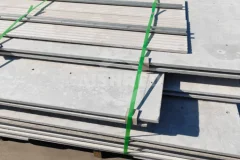
Fiber cement panels and gypsum boards are important materials in modern construction, widely used for their fire-resistant properties. These boards use cement or gypsum as binders, with minerals or other fibers as reinforcing materials, giving them an irreplaceable advantage in the construction industry. However, a large amount of waste is often generated during renovation, demolition, and production processes. This waste not only takes up valuable space but also causes environmental pollution, leading to resource waste becoming a significant issue.To address this problem, one of our customers implemented an innovative solution by shredding the discarded fiber cement boards and gypsum boards and reusing them as raw materials for aerated concrete. This approach not only effectively reduces waste accumulation but also achieves resource recycling, helping to reduce the environmental burden and improve the economic value of the materials.In the recycling process of fiber cement boards and gypsum boards,
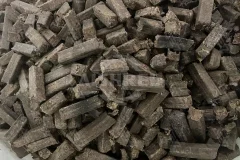
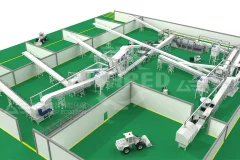
Normally, heavy materials such as broken bricks and concrete in c&d scrap are crushed and sorted into recycled aggregates and reused in the construction and building materials industry to achieve resource utilization. However, light materials such as wood chips, paper, cloth, and plastic are piled up and left idle because their components are too complex, sorting is too laborious, and disposal is too difficult, which not only increases the operating burden of enterprises, but also causes a waste of these resources.So is there a perfect solution to this problem? Of course, turning c&d scrap light materials into alternative fuels is a good way out.Process of C&D Scrap Light Materials Alternative Fuel ProductionThe process of turning C&D scrap light materials into alternative fuel involves several steps. Initially, the waste materials are collected and transported to a processing facility. At the facility, mechanical processing techniques, including shredding, grinding, and sorting, are employed to reduce the
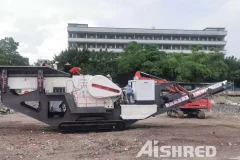
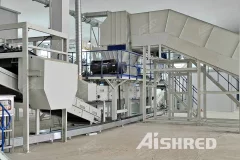
Common Machine to Process Construction Waste
2023-10-13There are several common machines used to process construction waste, each serving a specific purpose in the recycling and disposal process. These machines are designed to efficiently sort, crush, and recycle different types of construction waste. Here are some common machines used in the construction waste processing:Mobile Construction Waste CrusherA mobile crusher designed for construction waste processing is a versatile and practical solution for on-site processing. It can handle various types of construction waste and reduce the volume for easy transportation to recycling facilities. Key features include:Portable Design: The machine is designed to be easily transported to different construction sites.Multi-stage Crushing: Capable of multi-stage crushing to achieve the desired particle size.Magnetic Separator: To separate and recover metals from the construction waste.Efficient Dust Suppression: Equipped with a dust suppression system to control airborne particles.Construction Waste Sorting SystemA
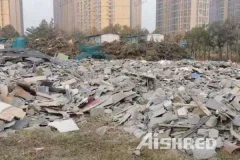
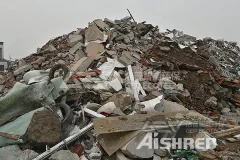
How to Recycle Demolition Waste?
2023-08-20Construction and demolition waste is a general term for engineering waste, engineering mud, engineering waste, demolition waste, and decoration waste. At present, these waste treatment methods are different: engineering waste has high recycling value, forming a recycling industry chain; Engineering waste and mud are often treated, utilized, and consumed on site; Due to the complex composition of materials, especially the complex composition of demolition waste, fixed treatment facilities are mainly used for treatment. The composition and nature of demolition waste vary depending on the form of the demolished building structure. From the composition of demolition waste, inorganic inert substances are the main components, with relatively simple types, mainly concrete blocks and bricks, with a content of around 70% -80%. The demolished waste also contains combustible materials such as metal, wood, and plastic, accounting for about 3-8%, while the rest are mainly materials that are not easily subdivided, such as
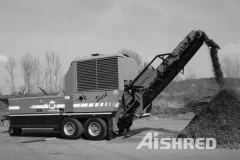
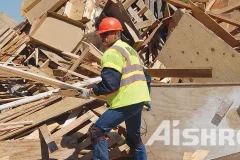
Mobile Construction Debris Shredder for Sale
2023-03-09For the disposal of construction debris, mobile temporary equipment is a better solution. AIShred's mobile crushing and shredding machines have good flexibility and passability, and can meet any temporary disposal requirements of solid waste. We also have other supporting mobile screening systems for fine management of materials. For different types of construction debris, we have a variety of equipment to meet your recycling requirements, whether it is producing recycled sand and gravel aggregates, mortar, metal or wood chips/pellets.How to get proposals and quotations?Getting a free proposal and quote from us is easy, Just tell us your title, contact information and: 1. Details of the material 2. Processing capacity per hour/day 3. Terminal products and requirements 4. Venue information (if any) After we receive your request, we will analyze it in detail, and will keep in touch with you on any unclear points during the period. Finally, you will get detailed equipment introduction, quotation and other
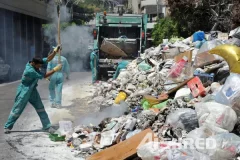
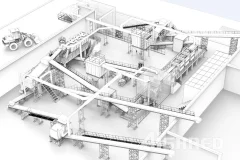
Diversified recycled products and construction waste recycling equipment with high treatment capacity have become important factors to help market development. Here are the detailed steps of construction waste recycling. The first step of construction waste treatment is to pre-screen and separate the muck for backfilling; After pre screening, the raw materials are broken into aggregates of different sizes, usually by two-stage crushing; Then the vibrating screen is used to divide the aggregate screen into different particle sizes for different purposes. Generally, the required particle sizes of sand aggregate are 0-5mm, 5-10mm, 10-31.5mm. These aggregates with different particle sizes have different uses, such as making recycled bricks, road cushion, etc. In the process of crushing and screening, manual sorting and magnetic separation equipment are also required to sort out recyclable and combustible materials for incineration power generation or RDF fuel rods. The equipment used in the whole production line
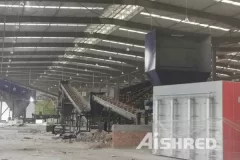
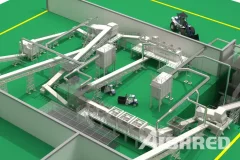
C&D Waste Recycling Plant for Sale in Russia
2023-02-01In Russia, there is a lot of demand for sorting construction and demolition waste for recycling and production of new products. We, AIShred (belonging to GEP Ecotech), have had many cases of construction and demolition waste treatment in Russia, China, Indonesia, Canada and other regions. Unlike other companies engaged in mining machinery (if you buy equipment from China, you may know that many Chinese suppliers used to focus on the aggregate and mining fields), AIShred focuses on providing solid waste recycling equipment, so we are more professional in providing C&D waste recycling plant. As shown in the picture above, this is the rendering of the Stationary C&D waste recycling plant we designed for a customer from Russia, which can handle pure construction waste and mixed construction waste. Final products include recycled aggregates, sand, metals, combustible materials, etc. We provide customers with many different options of construction waste sorting and recycling plants, free design solutions, accept
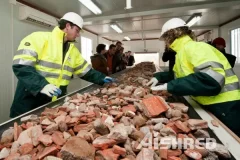
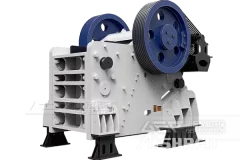
Construction waste disposal can greatly reduce the cost of construction waste stacking, but also help to protect the environment, which is of great significance. AIShred is a national high-tech enterprise focusing on the R & D, production, sales and service of intelligent, environmental protection technologies and solid waste recycling equipment. AIShred has always been committed to the sustainable development of green technology and the recycling of solid waste. At the end of June of 2022, our company came to an order with an Russian customers for our GEC series jaw crusher equipment for the treatment of 100t/h construction waste. At present, we are preparing for the goods. Overview of Construction Waste Disposal EquipmentOur construction waste disposal equipment mainly includes GEY series hydraulic cone crusher, GEC series jaw crusher, GEF series impact crusher, GEV series sand making machine and relevant auxiliaries. The GEC series jaw crusher purchased by the customer is a special treatment equipment for
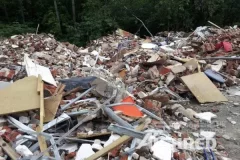
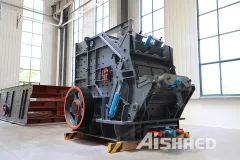
Construction waste recycling plant for sale in Southeast Asia, the recycling plant can be customized according to the needs of customers, and can be designed in different capacity, adopted for different materials contains. After sorting, removing or crushing, many wastes in construction waste can be reused as regeneration, mainly including:The coarse and fine aggregates produced from waste building concrete and waste bricks can be used to produce concrete and mortar of corresponding strength grade or to prepare building materials products such as blocks, wall panels, floor tiles, etc. The coarse and fine aggregates can also be used for the base course of highway pavement after adding solidified materials.The waste bricks and tiles can be used to produce recycled bricks, blocks, wall panels, floor tiles and other building materials.The muck can be used for road construction, pile foundation filling, foundation, etc.For the waste wood construction waste, the wood that has not been obviously damaged can be
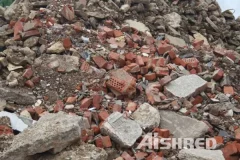
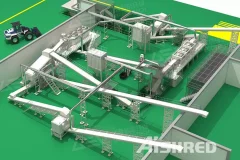
How Construction Waste is Recycled
2022-06-08The usual construction waste treatment method is mainly landfill, and the resource utilization rate is about 40%. The main components of urban construction waste include muck, concrete blocks, brick and stone tiles, sand slurry, asphalt, metal, plastic, textiles, wood, foam, glass, etc. most of them can be used as new engineering construction raw materials after treatment. After treatment, concrete blocks can be made into recycled aggregate. After treatment, 100 tons of construction waste can be turned into 88 tons of recycled aggregate, which not only solves the problem of enclosing the city with garbage, at the same time, it also protects land resources and creates economic benefits. How to deal with the construction waste? It requires a series of equipment to realize the resource treatment of construction waste, that is the construction waste treatment production line. Its work flow is that the construction waste is transported to the crushing equipment through the feeding equipment. After one or two-
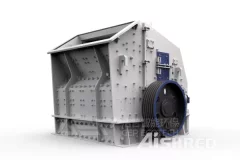
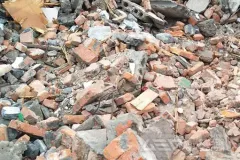
According to relevant statistics: China's annual production of construction waste more than 2 billion tons, about 8 times the amount of household waste generated, accounting for about 40% of the total amount of municipal solid waste generated, such a large proportion of the side also shows that the management of construction waste in the overall waste management occupies an important role, while the market size is huge, is still a blue ocean market, there will inevitably be a lot of environmental protection enterprises to enter this market. The main components of urban construction waste are slag, concrete blocks, masonry blocks, sand and mud, asphalt, metal, plastic, textiles, wood, foam, glass, etc. Most of them can be used as raw materials for new construction after treatment, concrete blocks can be made into recycled aggregates after treatment, 1 million tons of construction waste can be turned into 880,000 tons of recycled aggregates after treatment, which not only solves the problem of rubbish
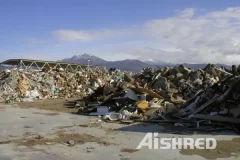
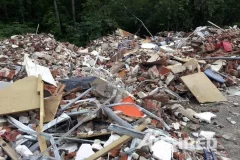
Construction and Demolition Waste Recycling
2022-06-02Construction and demolition (C&D) waste generally constitutes about 10%–20% of total urban solid waste, it includes bricks, tiles, stone, soil, rubble, plaster, drywall or gypsum board, wood, plumbing fixtures, non-hazardous insulating material, plastics, wall paper, glass, metal (e.g., steel, aluminium), asphalt, etc. C&D and other inert waste may be utilised for making bricks, pavement blocks, construction materials such as aggregates etc.The use of C&D waste will minimise the cost of managing such waste and requirement for valuable landfill space, and also save natural resources and reduce the use of virgin soil. Benefits of Processing C&D WasteC&D waste can be put to a profitable use, given the scarcity of sand and stone for construction, thereby saving natural resources.It prevents public nuisance and traffic congestion issues arising from indiscriminate dumping of C&D waste.It saves valuable space at landfill sites.It reduces cost of bulk transportation if recycled close to source of generation.C&D
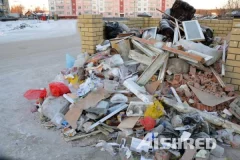
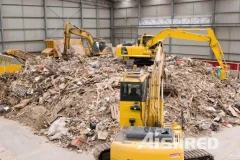
Construction Debris Grinders for Sale
2022-05-11Construction waste is generated from the various construction activities of building, maintaining, renovating, and demolishing infrastructure facilities. This is not only concrete, bricks, pieces of metal, but also dismantled doors and windows, removed linoleum, old wallpaper and so on. A common name for construction debris is construction and demolition waste(C&D waste). Construction debris must be disposed of for a fee by specialized organizations that have the appropriate license. So, many waste management companies and other investor interested in entering this field.How to Recycling Construction DebrisThere are many valuable substances in Construction Debris, metals and large wood can be recycled, small wood and plastic waste can be made into alternative fuels, concrete and bricks can be made into recycled aggregates and building fillers. After being processed by a Construction Waste Treatment Facility, only a very small portion of materials goes to landfills. Equipment for Processing Construction Debris
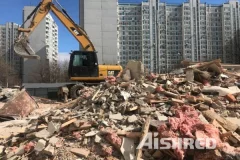
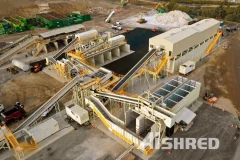
Recycling of Construction Waste
2022-04-20In the process of repair and construction, a large amount of waste is generated at the facilities. Construction waste can be divided according to dimensions: large, medium and small. The first group includes stones, reinforced concrete structures. To medium - fragments of bricks, pieces of wood or finishing materials, and to small construction waste - sand or concrete chips. Theoretically, all construction waste can be used, but subject to separation. To do this, some companies provide large containers for the accumulation of construction waste separately by type: metal, plastic, glass, stones (brick, hardened mortar and concrete), wood. Such an organization of construction waste collection is beneficial for builders, since in this case the tariff for waste removal is lower. Companies involved in the disposal of construction waste get rid of the need to sort such waste.Construction Waste Recycling Equipment Untimely disposal of construction waste would lead to catastrophic environmental pollution, negative
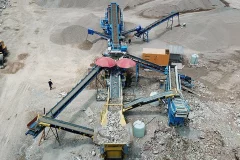
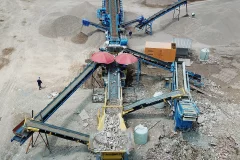
Construction & Demolition Waste Processing
2022-03-03Solid waste from construction, demolition, maintenance and renovation activities not only takes up valuable urban space, but can also lead to soil and groundwater contamination, and many of the valuable materials it contains are a waste of resources. Resourceful disposal of construction and demolition waste can recover most valuable materials and reduce landfill space and environmental pollution.Construction and demolition waste consists of slag, mortar, wood, steel, concrete, gypsum, brick and tile, asphalt and metal, which can be sorted and crushed to achieve metal recovery; brick, tile, concrete and stone can be made into sand and gravel aggregates, mortar or building fill; and combustible materials such as waste wood, plastic and leather fabric can be made into alternative fuels.GEP ECOTECH's shredding, crushing and screening technology makes it easy to tackle the challenges of construction and demolition waste disposal, with easy crushing, efficient sorting and 100% recycling targets. GEP ECOTECH can



